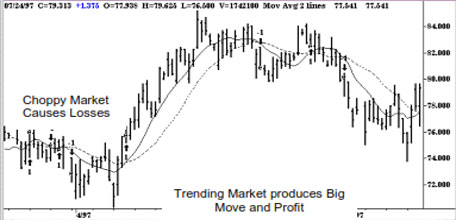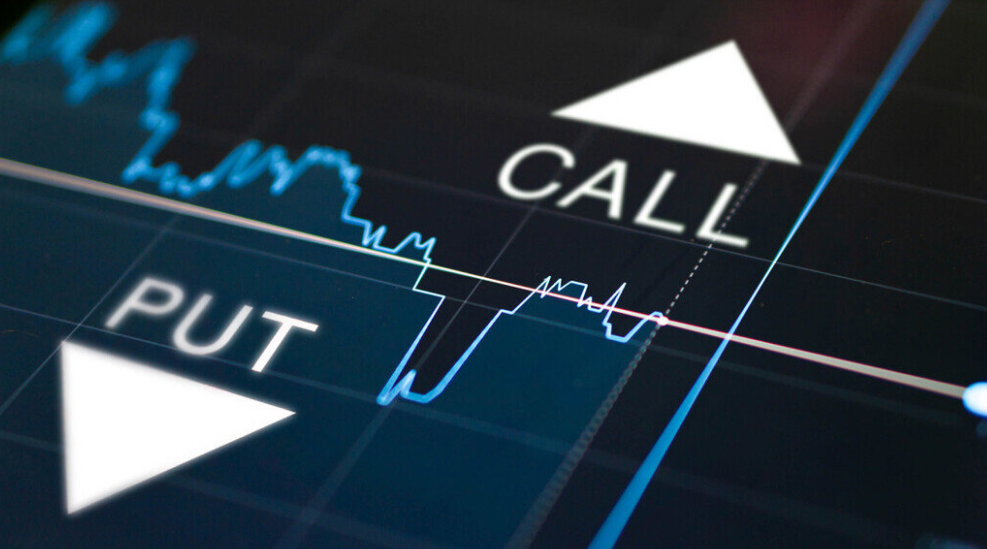Trading as a Business
Anyone serious about finding a profitable strategy should use the latest technology and the best software available. This means learning how to use a computer. When I started trading, all historical testing had to be done by hand. This was labor intensive and very time consuming. It was necessary to peruse charts visually and record the simulated entries and exits by hand. For intra-day charts, this process was even more time consuming—the charts had to be printed with the indicators on them and for a significant length of time (several months).
If these indicators didn’t prove to be profitable, the process had to be repeated for the next month with revised indicators. This process continued month after month. It would sometimes take me three to six months to find a strategy that would work under current market conditions. System Writer, followed of course by TradeStation, was the first computer program to help eliminate this labor intensive historical testing. Using TradeStation to do your testing has three distinct benefits.
Third, you can be more creative. Rather than spend all of your time doing the testing, you can have the computer do the testing and you can spend your time researching new trading ideas. Strategy development is like any other business. It’s very unusual to find a successful business where only one individual has designed the product, does the
marketing, is engaged in product development, and runs the machine to produce, package, and ship the product.
It is much easier and less stressful to hire a staff to handle the paperwork and production employees to make the product. The entrepreneur can then spend his or her valuable time in product development and planning the future of the company rather than running day-to-day operations.In the trading business, Trade Station can be your staff and production employees.The program is indispensable in time savings, cost savings and individual productivity. It frees you from the repetitious side of the business so you can spend your time on the creative side—the side that will ultimately make you the money.
As the futures and securities industry continues to grow, more and more traders will enter this business. The competition for profits will continue to increase. For example, in the early ‘80s it was very easy to make a lot of money day-trading the S&P. I used a simple dual moving average crossover strategy on 5-minute bar charts. There were proportionately very few intra-day traders with computers that were competing for profits. But since then, with the increase in the number of traders using intra-day charts, these very rudimentary indicators have stopped working. When everyone started using them, the profits dried up. It is much more difficult in today’s markets to make the money that was there in the early years.The standard indicators just aren’t that effective anymore.
I believe that the only rational way to be a successful trader is by using the best software available—TradeStation—and learning to be an effective strategy developer and strategy trader. The professional traders are all using sophisticated computers, and most of them are now using TradeStation. The technology resource differential of the past is now gone. An individual trader can afford the same technology as the successful professional. The playing field is now not resource driven but intellectually driven. Knowledge is more important than capital.
To read More ,Please download the book.
binary options trader, Forex Education, Forex Education Books
Similar Videos and E-books
LEAVE A COMMENT
All Books
For Beginners
- Candlesticks For Support And Resistance
- Online Trading Courses
- Commodity Futures Trading for Beginners
- Hidden Divergence
- Peaks and Troughs
- Reverse Divergences And Momentum
- Strategy:10
- The NYSE Tick Index And Candlesticks
- Trend Determination
- The Original Turtle Trading Rules
- Introduction to Forex
- The Six Forces of Forex
- Study Book for Successful Foreign Exchange Dealing
- Forex. On-Line Manual for Successful Trading
- 18 Trading Champions Share Their Keys to Top Trading Profits
- The Way to Trade Forex
- The Truth About Fibonacci Trading
- Quick Guide to Forex Trading
- Chart Patterns and Technical Indicators
- Forex Trading
- Trading Forex: What Investors Need to Know
- My Dog Ate My Forex
- Point & Figure for Forex
Forex Market in General
- Screen Information, Trader Activity, and Bid-Ask Spreads in a Limit Order Market
- Strategic experimentation in a dealership market
- Limit Orders, Depth, and Volatility
- Reminiscences of a Stock Operator
- Market Profile Basics
- Quote Setting and Price Formation in an Order Driven Market
- Phantom of the Pits
- An Introduction to Market Profile and a Users Guide to Capital Flow Software
- The Effect of Tick Size on Volatility, Trader Behavior, and Market Quality
- Trading as a Business
- What Moves the Currency Market?
- Macroeconomic Implications of the Beliefs and Behavior of Foreign Exchange Traders
- All About the Foreign Exchange Market in the United States
Psychology of Trading
- A Course in Miracles
- Thoughts on Trading
- Calming The Mind So That Body Can Perform
- Lifestyles of the Rich and Pipped
- The Miracle of Discipline
- Zoom in on Personal Trading Behavior And Profit from It
- The Woodchuck and the Possum
- 25 Rules Of Forex Trading Discipline
- Stop Losses Are For Sissies
- Your Personality and Successful Trading
- Trading as a Business
- The 7 Deadly Sins of Forex (and How to Avoid Them)
- The 5 Steps to Becoming a Trader
Money Management
- Risk Control and Money Management
- Money Management
- Position-sizing Effects on Trader Performance: An experimental analysis
- Fine-Tuning Your Money Management System
- Money Management: Controlling Risk and Capturing Profits
- Money Management Strategies for Serious Traders
- The Truth About Money Management
- Money Management and Risk Management
Forex Strategy
- 1-2-3 System
- Bollinger Bandit Trading Strategy
- Value Area
- The Dynamic Breakout II Strategy
- Ghost Trader Trading Strategy
- King Keltner Trading Strategy
- Scalp Trading Methods
- LSS - An Introduction to the 3-Day Cycle Method
- Market Turns And Continuation Moves With The Tick Index
- The Money Manager Trading Strategy
- Picking Tops And Bottoms With The Tick Index
- The Super Combo Day Trading Strategy
- The Eleven Elliott Wave Patterns
- The Thermostat Trading Strategy
- Intraday trading with the TICK
- Traders Trick Entry
- Fibonacci Trader Journal
- Rapid Forex
- Microtrading the 1 Minute Chart
- BunnyGirl Forex Trading Strategy Rules and FAQ
- The Daily Fozzy Method
- Forex Traders Cheat Sheet
- Offset Trading
- How to Trade Both Trend and Range Markets by Single Strategy?
- A Practical Guide to Technical Indicators; Moving Averages
- FX Wizard
- FX Destroyer
- A Practical Guide to Swing Trading
- Practical Fibonacci Methods for Forex Trading
- Using The Heikin-Ashi Technique
- The Day Trade Forex System
- 5/13/62
- Not So Squeezy Trading Manual
- KobasFX Strategy
- Killer Patterns
- 3D Trading
- 4 Hour MACD Forex Strategy
- WRB Analysis Tutorial
Advanced Forex Trading
- A New Interpretation of Information Rate
- CCI Manual
- Nicktrader and Jeff Explaining Reverse and Regular Divers
- NickTrader on No Price CCI Divergence Trading
- Are Supply and Demand Driving Stock Prices?
- The Sharpe Ratio
- The Interaction Between the Frequency of Market Quotes, Spread and Volatility in Forex
- Trend Determination
- Trend vs. No Trend
- A Six-Part Study Guide to Market Profile
- How George Soros Knows What He Knows
- Core Point and Figure Chart Patterns
- Coders Guru Full Course
- Point and Figure Charting: a Computational Methodology and Trading Rule Performance in the S&P 500 Futures Market
- Evolving Chart Pattern Sensitive Neural Network Based Forex Trading Agents
- Heisenberg Uncertainty Principle and Economic Analogues of Basic Physical Quantities
- The String Prediction Models as an Invariants of Time Series in Forex Market
- Using Recurrent Neural Networks to Forecasting of Forex
- The New Elliott Wave Rule - Achieve Definitive Wave Counts











